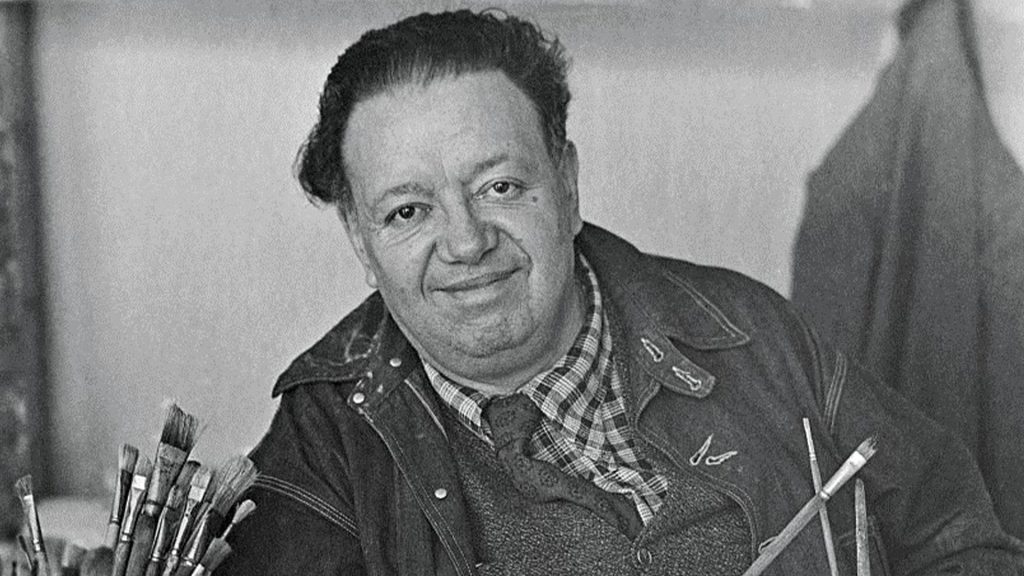The Diego Rivera Mural Museum opened its doors to the public on February 19, 1988, to safeguard one of Diego Rivera’s most emblematic murals, Sueño de Una Tarde dominical en la Alameda Central (1947), which includes diverse protagonists of national history.
As part of the “Contigo en la Distancia” campaign of the Ministry of Culture of the Government of Mexico, the public can take a 360° virtual tour on the museum’s website: www.museomuraldiegorivera.bellasartes.gob.mx as well as access high-resolution versions of each of the characters by downloading the Second Canvas application.
Likewise, speakers of an indigenous language can access the official YouTube channel of the National Institute of Fine Arts and Literature (INBAL), which hosts seven videos in different languages: Nahuatl, Maya, Zapotec, Tsotsil, Mazahua, Totonaco and Purépecha. Thus, you will be able to live this sound experience through this selection of native languages of Mexico, which are a fundamental part of the heritage of our country.
Origin and recovery of an emblematic work
Carlos Obregón Santacilia, the architect in charge of the design and construction of the Hotel del Prado in Mexico City, proposed to Diego Rivera, from the beginning of the project, the creation of a mural for the Versalles dining room, where it remained until 1960 when it was moved to the hotel lobby, for which a metal structure was built that supports it to this day.
In Rivera’s own words, “the composition (of the mural) are memories of my life, of my childhood and youth, and cover the period from 1895 to 1910. The characters on the promenade are all dreaming, some sleeping on the benches and others walking and talking.
Between July and September 1947, the muralist from Guanajuato created, with the support of the young painter Rina Lazo, his “Dream of a Sunday Afternoon in the Alameda Central”, a synthesis of the history of Mexico from the 16th century to the first half of the 20th century. In this work, the muralist depicted himself as a child, on a walk in the Alameda Central, accompanied by historical characters.
This exceptional work includes various protagonists of national history, among them the viceroy Luis de Velasco, the emperor Agustín de Iturbide, Antonio López de Santa Anna, the Cuban writer and liberator José Martí and other characters that, in addition to playing an important role, Rivera admired. At the center of the composition is a group of personalities, including the painter himself, portrayed as a child with La Catrina, Frida Kahlo and the engraver José Guadalupe Posada.

In September 1985, two earthquakes shook Mexico City, causing irreparable damage to the Hotel del Prado. On December 14, 1986, thanks to the joint work of an interdisciplinary group of specialists from the National Institute of Fine Arts and Literature, the National Autonomous University of Mexico and the Federal District Department, the fresco, measuring 4.17 m x 15.67 m and weighing 35 tons, was moved.
After 12 hours of meticulous work, it was placed on the site occupied by the parking lot of the Hotel Regis. The work was protected and the enclosure was built on top of it, which houses it to this day. The space was designed by architect José Luis Benlliure Galán, who at that time was the deputy director of projects in the INBAL’s Architecture Department. In this way, the mural Sueño de una tarde dominical en la Alameda Central became part of an extraordinary history of patrimonial rescue and the origin of one of the youngest museums of the INBAL Museum Network, inaugurated on February 19, 1988.
If you want to admire this amazing work of art closer, please do not hesitate to visit the Museo Mural Diego Rivera located in the Historic Center in Mexico City.
TYT Newsroom


